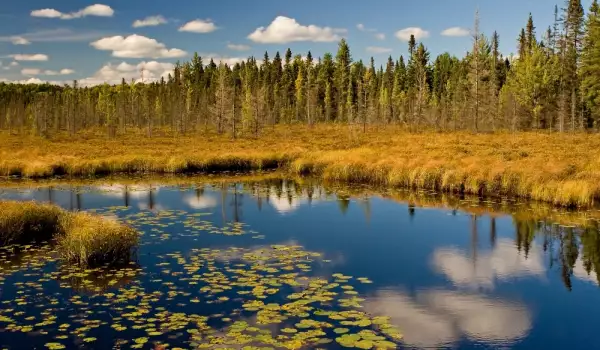Algonquin Natural Park

The Algonquin Natural Park existed back in 1893. It is the first, and one of the largest provincial parks across Canada, located between the Georgian Bay and the Ottawa River, in the Canadian province of Central Ontario.
This natural area covers about 7653 square kilometers of forests, rivers, lakes, fields and hills. Its size and proximity to the large urban centers, Toronto and Ottawa make it one of the most popular parks in the eastern Nipissing District and throughout the country.
Algonquin can be reached by Highway 60, which passes through the southern part of the park, east of Huntsvil. Another way to get to the park is on a Canadian highway that surrounds the northern area of the park. There are over 2, 400 lakes and 1 200 km of streams and rivers in the park. The views make it attractive to many lovers of natural beauty. Most of the water basins here were created through the melting of glaciers in the so called ice age.
Algonquin Natural Park was declared a national historic site in 1992. The main purpose of declaring the area a reserve was to regulate the widespread logging activity in these lands. Today the park is a beautiful area with many lodges, hotels, villas and camp sites for tourists. There is also a railway stop that is interesting for tourists to see, even though logging has not been stopped and is still legalized.
The park is located in the transitional zone between the northern coniferous and deciduous forests in the south. This unique mixture of different forest, plant and animal species is an exceptional value for our planet.
Many tourists arrive in the Algonquin Nature Park, mostly to enjoy the unique scenery. Here visitors can practice hiking and biking, as the area has many long routes.
For lovers of water sports like sailing and canoeing, this is a real paradise, because of the vast length of water channels it can be a challenge. A curious fact is that the picturesque forests and lakes have inspired many landscape artists from the so-called "group of seven."















